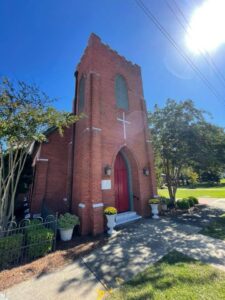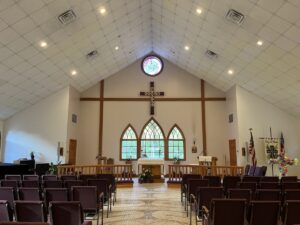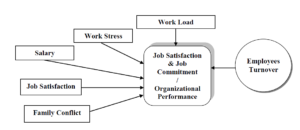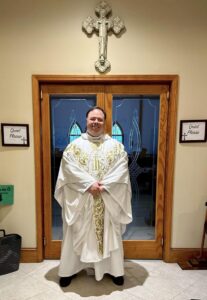Congregational systems for clergy retention leading to parish growth and sustainability.
Overview
The Episcopal Church is experiencing a sharp decline in attendance, equating to reduced giving and missional activity. At the same time, the church sees a frequent clergy turnover at medium and smaller churches. Only about fifteen percent of the churches can be categorized as large churches. Therefore, most parishes experience frequent clergy turnover, and frequent leadership changes could be related to the decline. In the life of the parish and priest relationship, it takes about seven years for the priest and parish to reach their full peak or full potential in ministry. If clerics leave around year five, they reduce the chance of a ministry peak and the creation of sustainability in the parish. Can the church and parish work together to retain clerics for extended tenure, therefore increasing the chances of sustainability and growth? We will examine the primary reasons for early clergy departure and develop systems that may increase the length of the cleric’s tenure at a single parish.
Context
I began ordained ministry in 2015 and was called to a small rural parish in a town of about 5000 people. The priest before me served the church for over ten years until retirement and was the first full-time priest in the church’s history. Under the priest’s tenure, the parish experienced significant growth in attendance and giving, paving the way for the parish to sustain a full-time clergy model.
I stayed for four years before moving on. The church did not experience conflict or other issues during my tenure but had plateaued in growth. I arrived at my current parish in 2019. While it was a larger parish, it had also plateaued in growth and even slightly declined.
In looking over attendance and other records, in recent history, both parishes had long-term leadership and experienced growth under the tenure of those clergy. Further investigation showed that it took seven years for the church to reach “the golden years” under a priest. The challenge for both churches was that no priest stayed past five years after the long-term clergy departed.
The Episcopal Church
The Episcopal Church maintains records of church statistics such as the number of members, baptisms, weddings, etc. In addition to those records, one that draws the most attention is the Average Sunday Attendance (ASA). While ASA is not a perfect number when gauging the success of a congregation, a significant increase or decrease can indicate a congregation’s health. From 2011 to March 2020, the Episcopal Church experienced a thirty percent decrease in ASA. The reduction in ASA can be related to many factors. However, the data also shows that clergy averages about five years in small to medium-sized churches before moving on to a new parish or different call in ministry. If churches take about seven years to peak under a priest’s leadership, yet clergy leaves after five, could this be a factor in the decline of the Episcopal Church? Churches have the opportunity to develop systems that can attract and retain clergy for extended periods, therefore increasing the chances for parish growth and sustainability.
The cycle of the priest and parish relationship
When a priest arrives at a parish, everything is new, and there is an energy surrounding the arrival and expectations of the new priest. This phase is called the honeymoon. It is a great time, but it is a fantasy as, at some point, it will end. The next phase is the disappointment phase. The parish will realize the new priest is imperfect and may feel let down as unrealistic expectations may have been set during the honeymoon phase. Disappointment can go both ways, as the priest may feel disappointed in the parish. Those with high levels of spiritual maturity will be able to admit to one another their disappointment. Working through disappointment is critical, paving the way for real ministry to begin. Finally, the priest and parish enter a phase called realistic love and expectations. After working through disappointment, the parish and priest will realize each other’s strengths and weaknesses. Upon this realization, they will learn how to work together and develop a positive stride in ministry. Some priests and parishes will never reach this phase, as the priest will depart during the disappointment phase.
Causes for clergy dissatisfaction
Clergy wear multiple hats in churches of all sizes. The challenge is to develop leadership that will handle the details of church management while the priest retains oversight. Priests should be aware of building and other physical aspects, yet the implementation of strong lay leadership can develop systems to manage granular aspects of the parish.
Priests can easily get caught up in over-functioning and being involved in every transaction of the parish, setting up resentment and disappointment with the parish. Ordained ministry is about administering the sacraments, officiating worship, and meeting the pastoral needs of the congregation and community. Ordained ministry is not about deciding paint colors and air conditioning maintenance. Developing lay leaders to assist in these areas will allow the priest to focus on their vocation of ordained ministry.
Systems for retention
For the most part, we don’t like being judged or evaluated. However, feedback can be an essential part of growth and development. I was not too fond of performance reviews when I worked in the corporate world. Some features made us cringe, yet at the same time, performance reviews created a space for honest feedback and goal setting. Churches can leverage performance reviews as a way for both the priest and parish to provide feedback and ways to improve. Allowing the space for feedback may prevent items that remain unspoken or “under the iceberg: from surfacing and be addressed before they lead to more significant problems or conflict. The implantation of these systems can be an important step toward clergy longevity.
Developing strong lay leaders, and systems for feedback and improvement can pave the way for longer clergy tenure at a parish. Longer tenure can be a factor in reversing the decline of the Episcopal Church and empowering us all to spread the Good News.





